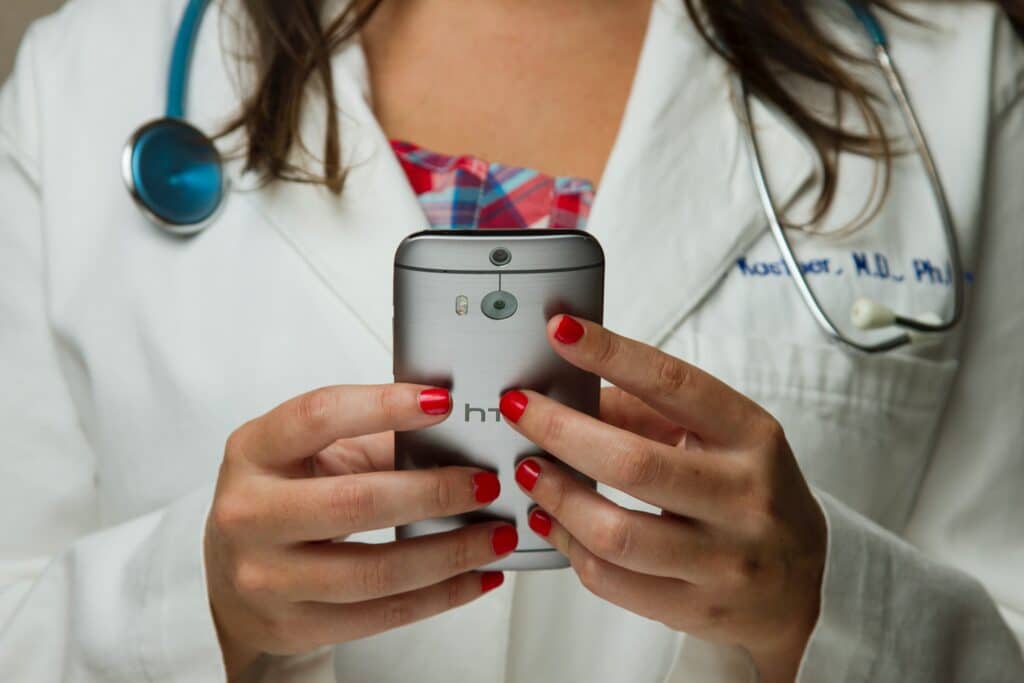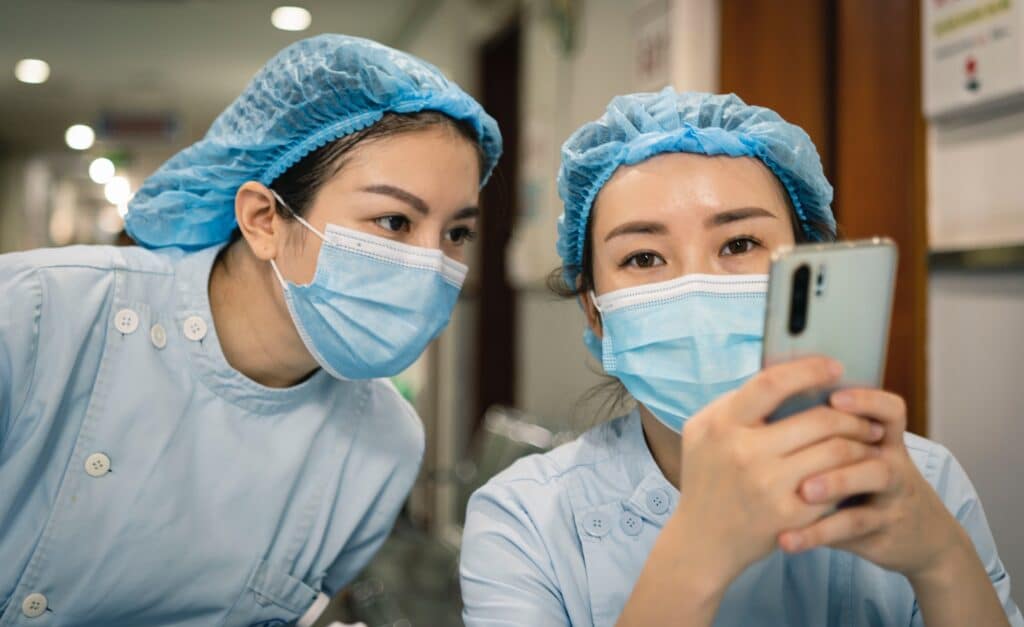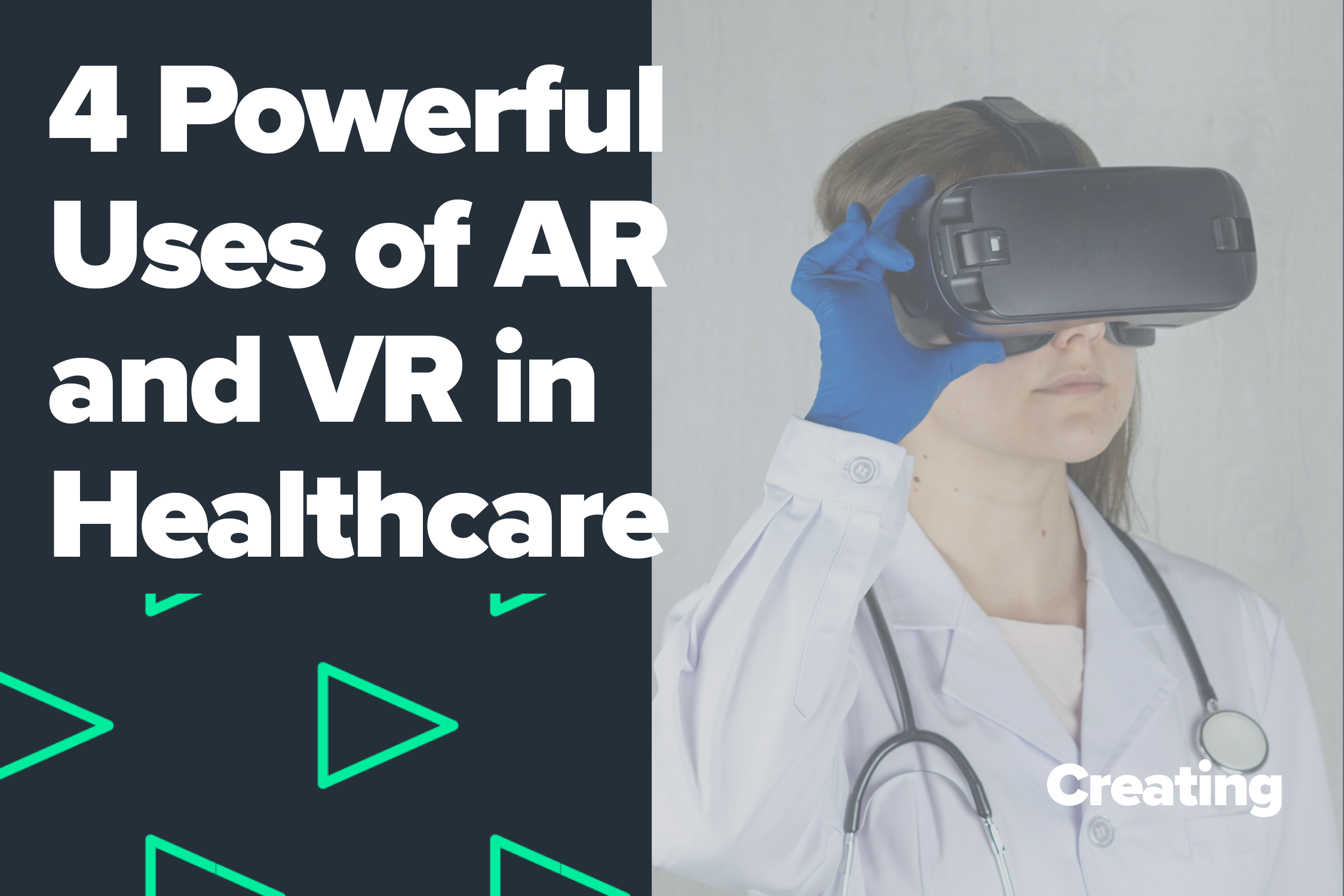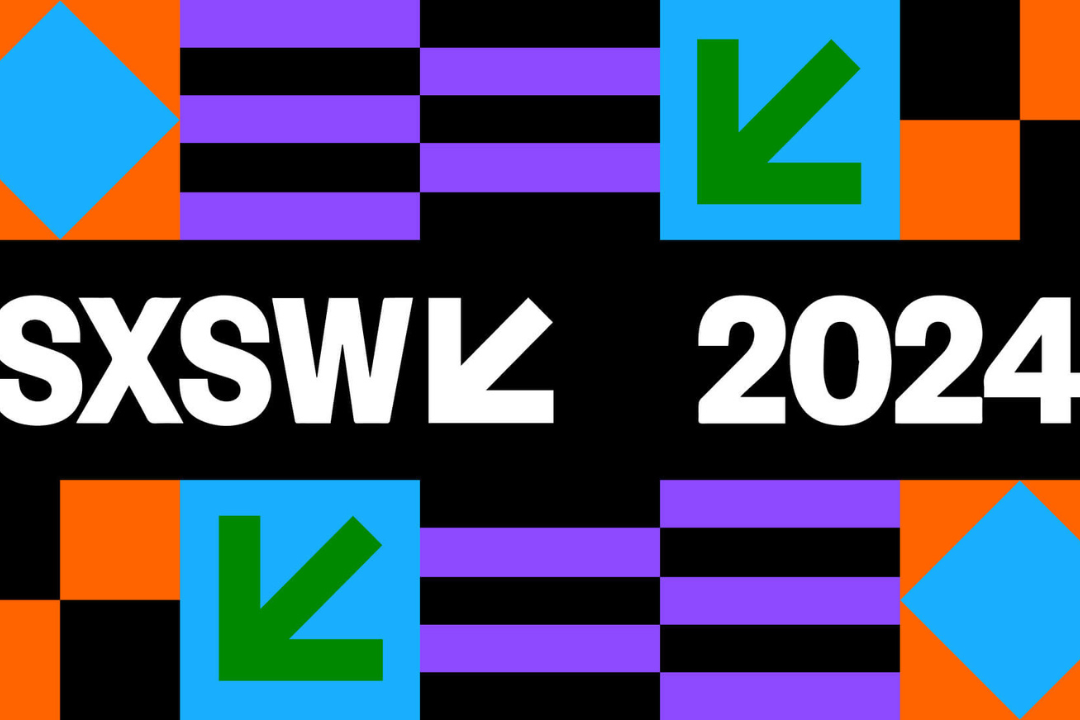With ongoing advancements in visual technology, businesses are constantly looking for new and innovative methods to promote their brand, create engaging experiences, and enhance the overall experience of stakeholders. However, due to advancements in smart phone technology, augmented reality is now becoming more accessible than ever to the public, allowing many businesses to develop immersive and captivating content. One industry that has greatly benefitted from utilising augmented reality is the healthcare industry, which has now begun to use this innovative technology in the training and education of medical professionals, as well as the treatment of patients.
In this blog, we will explore the applications of augmented reality in healthcare and discuss what benefits this innovative visual technology can bring to stakeholders.
But before we dive in and explain the potential applications of augmented reality in healthcare, we should probably give a brief explanation as to what augmented reality technology is!

So, what is Augmented Reality?
In short, augmented reality is a technology that blends real-world elements with virtual ones. By using a virtual headset, or smart phone device, augmented reality uses cameras and sensor technology to superimpose digital information (such as sounds, images and text) on top of the real world we see.
At first, this may sound similar to virtual reality, however, whilst virtual reality replaces everything you can visually see in the real world with a computer-generated environment, augmented reality allows us to bring the most useful information from the digital realm into our own visual perception of the environment around us and enhance this further with additional information.
With advancements in smart phone and camera technology, augmented reality has now become incredibly easy to access for everybody and has subsequently allowed many businesses to develop immersive and captivating virtual content.
For example, you may have seen augmented reality used at trade shows where visitors can use their smartphones to activate an augmented reality experience and see a computer-generated version of a product. Additionally, social media apps such as Instagram and Twitter can also utilise augmented reality to add filters and effects on top of photographs and film footage.
Augmented reality has also become increasingly popular in the world of gaming, as game developers have utilised smartphone technology to allow players to blend a gaming experience in a real-world setting. The most popular example of this is ‘Pokémon Go’, which allows players to locate, capture, train, and battle virtual Pokémon in the player’s real-world location.
As you can begin to see, many people may have already experienced augmented reality within their smart phone devices, however, this incredible technology has also been utilised within the healthcare sector and has helped to radically transform the industry.
Applications of Augmented Reality in Healthcare
Training
One of the most significant way in which we are seeing augmented reality in healthcare beign used, is through the clinical training of healthcare professionals. With augmented reality, healthcare students can interact engage, and treat patients whilst also having access to additional supporting multimedia elements such as text, music, videos, animations, and narration.
Additionally, augmented reality has been proven to enhance the education and training of medical professionals and leading to better outcomes in patient care. Further research has also determined that augmented reality can increase the speed at which students learn and simplify the overall learning process.

Education
As well as helping with the training of healthcare professionals, augmented reality can also help to educate students by allowing them to interact with an engaging and interactive experience.
One of the biggest benefits of augmented reality, is that because this experience is incredibly immersive and requires a lot of engagement and interaction from users, this technology can be used to enhance the education of students and create a unique and memorable learning experience.
For example, medical students can use augmented reality to see the inside a human body projected on top of a real human and examine specific organs and anatomy. Furthermore, this virtual experience could incorporate additional multimedia elements such as text, music, videos, animations, and narration, which can help to enhance the overall experience and educate the user. An example of this can be seen in the video below!
In Practice
As well as assisting with the training and education of medical professionals, augmented reality can also assist the day to day lives of all those working within the healthcare industry.
Additionally, augmented reality has been utilised in surgical procedures and can assist doctors and specialists, providing them all the necessary information whilst performing surgery. During an operation, a surgeon can use augmented reality to identify the precise location of an organ, access additional medical information, and diagnosis reports right in front of their eyes.
One practical example of this is AccuVein, which uses augmented reality to assist nurses and other healthcare professionals to find veins within a patient’s body. This is achieved by using a combination of a laser-based scanner, processing system and digital laser projection that identifies where veins are over the skin, allowing medical practitioners to perform accurate incisions. A practical example of AccuVein can be seen in the video below!
Improving the Patient Experience
Another way in which augmented reality is being utilised within the healthcare industry, is through the treatment of patients in a variety of different methods and techniques.
For instance, as well as educating healthcare professionals, augmented reality has also been used as an effective tool for educating patients and helping medical professionals to explain complex medical procedures. For example, augmented reality can be used to provide a practical demonstrate as to how specific drugs and medicines work, and what impact these can have on the human body.
Furthermore, augmented reality can also be used to enhance the packaging and labelling of pharmaceutical and medical products such as medicine and equipment. An example of engaging medical packaging can be seen here in our case study, where we used augmented reality to help remind patients to take their medication. Another example can be seen in the video below, where Eon Visual Media developed a web-based augmented reality experience for Welland Medical to help provide a practical demonstration of the new Aurum Plus ostomy products.
Summary
As you can see, there are many ways in which augmented reality can be applied within the healthcare industry.
At Eon Visual Media we are incredibly passionate about creating visually stunning and engaging augmented reality experiences which can you to engage, educate and inspire your stakeholders. To see our augmented reality projects in action, please check out our video showreel below!
If you’d like to find out more about how augmented reality can help your business, please check out our augmented reality webpage or alternatively please contact us here!






Learned so much in this post, thanks for sharing. That AccuVein use case is VERY cool.
Thanks Emma! Really glad you enjoyed our blog! 😊